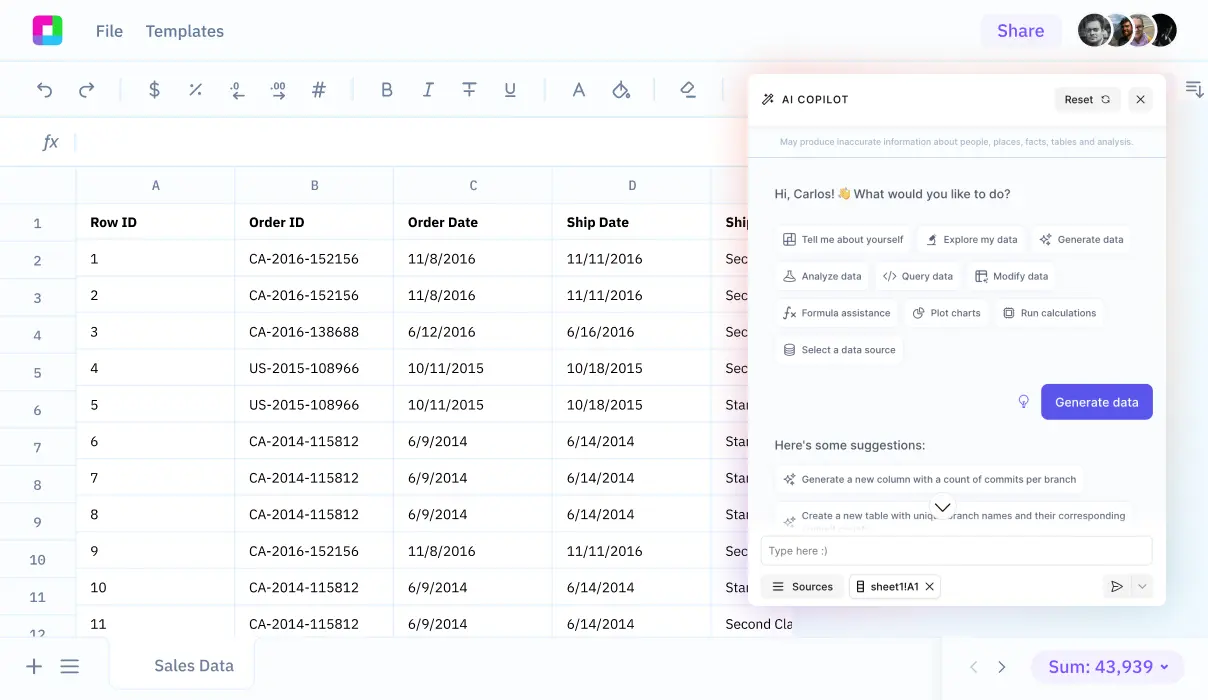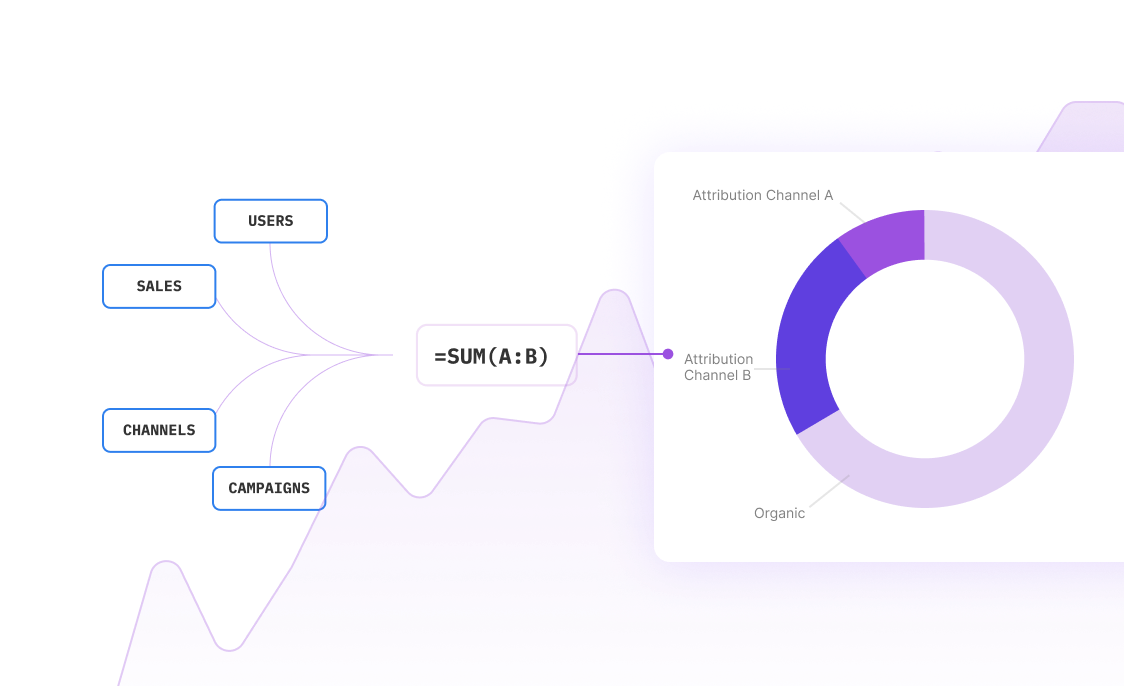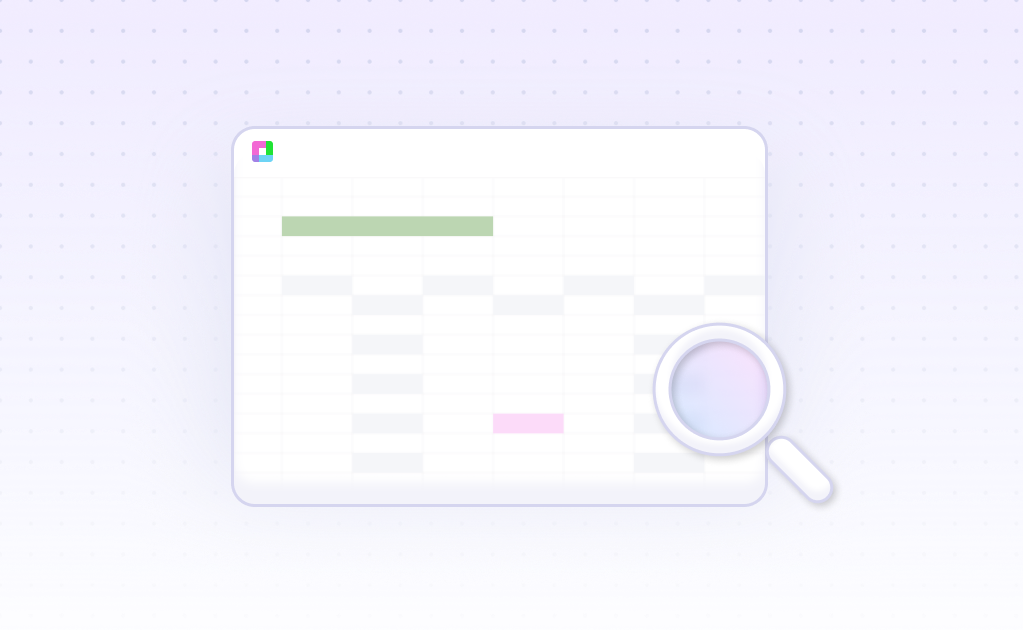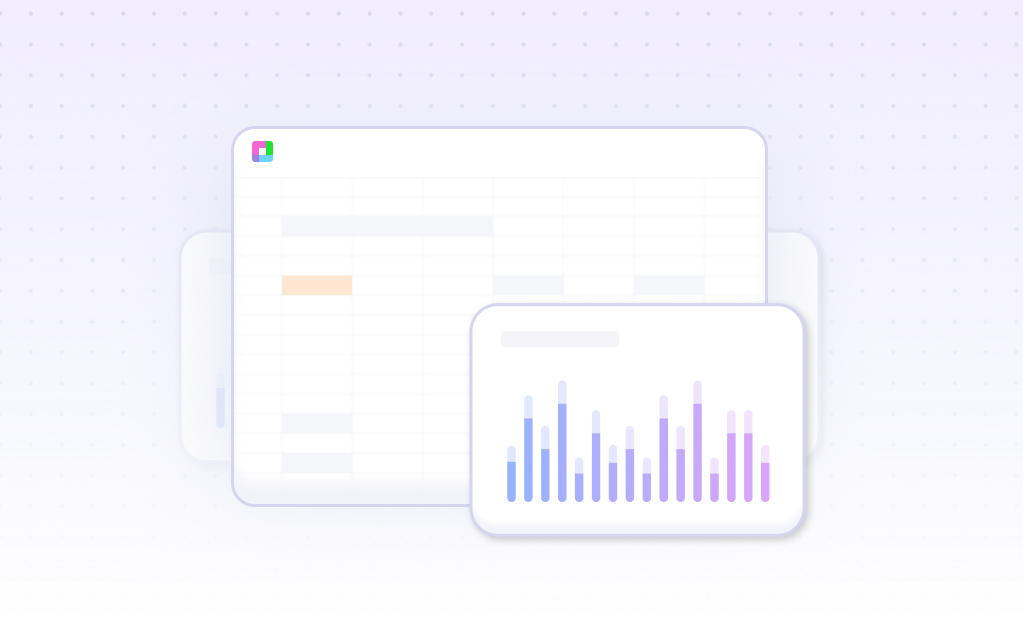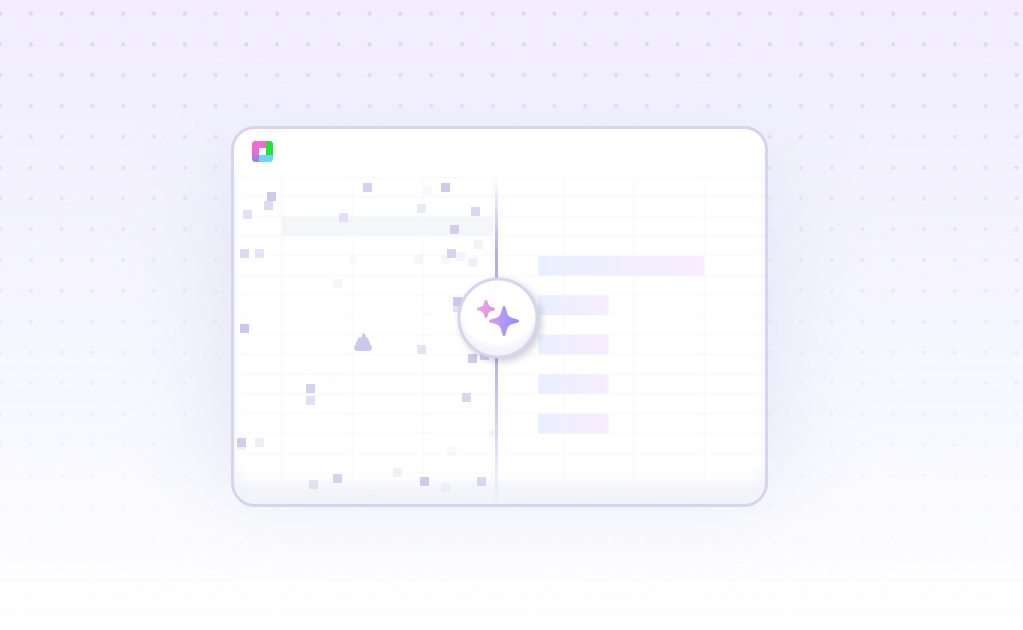
Introduction
Thematic analysis helps researchers identify patterns and themes in qualitative data from interviews, surveys, and literature reviews. As qualitative data from social media and other digital sources grows, thematic analysis becomes increasingly important. While Excel offers basic theme analysis capabilities through formulas and automatic theme labeling, modern AI tools provide more efficient solutions.
Sourcetable combines Excel's functionality with AI-powered features for advanced data analysis. It automates spreadsheet tasks, generates formulas like SUM and VLOOKUP, and provides SQL and Python integration. Through AI-driven insights and automated data cleaning, Sourcetable streamlines the thematic analysis process without requiring extensive Excel knowledge.
Learn how Sourcetable's AI-powered platform enables quick and efficient theme analysis in your spreadsheets.
Why Sourcetable Outperforms Excel for Theme Analysis
Sourcetable combines spreadsheet functionality with AI-powered capabilities, making it superior to Excel for theme analysis. While Excel serves over a billion users, its limitations become apparent when handling complex analytical tasks. Sourcetable's AI copilot understands workbook range selection and adjusts scope context to your datasets, enabling more efficient theme analysis.
Enhanced Analytical Capabilities
Sourcetable's cloud computing architecture performs compute-intensive tasks faster than Excel. With support for 3D and 4D data types and vector queries, it handles complex theme analysis that would be cumbersome in traditional spreadsheets. The platform's 500+ formulas and functions, combined with its SQL layer, provide powerful analytical tools.
AI-Driven Efficiency
Unlike Excel's manual processes, Sourcetable's AI algorithms automate repetitive tasks and identify patterns quickly. The AI copilot assists with database-centric analysis and SQL queries, while reducing human error and ensuring data accuracy. This automation significantly speeds up formula creation, charting, and data cleaning.
Comprehensive Data Integration
Sourcetable syncs with over 100 business applications and major databases including Postgres, MySQL, and MongoDB. This integration capability, combined with A1 notation and cell-based referencing, makes it ideal for analysts and finance professionals working with diverse data sources. The platform strengthens data storytelling and improves cross-team communication.
Benefits of Theme Analysis with Sourcetable
Theme analysis offers a structured approach to analyzing qualitative data across text, images, and videos. This rigorous method uncovers hidden meanings beyond surface observations while maintaining clear documentation of analytical methods.
Key Advantages of Thematic Analysis
The technique excels in data organization and management, enabling easy theme comparison and contrast. Its inductive approach and accessibility make it ideal for researchers of all experience levels.
AI-Powered Analysis with Sourcetable
Sourcetable enhances thematic analysis through AI capabilities like natural language processing and automated data analysis. Users can leverage AI to calculate new columns, analyze datasets, and get instant answers to business questions through the ASK_OPENAI formula.
The platform's AI Analyst feature streamlines the thematic analysis process, offering advanced data interpretation capabilities while maintaining the structured approach required for qualitative research.
Theme Analysis with Sourcetable: AI-Powered Spreadsheet Analysis
Sourcetable leverages AI technology to enable two primary approaches to theme analysis in spreadsheet data. As a user-friendly platform suitable for both novice and experienced analysts, it automates tedious data management tasks while enhancing overall productivity.
Organizing into Themes
The first analysis approach with Sourcetable focuses on direct theme organization. This method uses AI-powered automation to simplify the process of grouping related data points into cohesive themes, similar to capabilities found in tools like Loopanel and NVivo.
Codes-to-Themes Analysis
The second analysis approach involves organizing data with codes before developing themes. Sourcetable's AI technology streamlines this more detailed analysis method, comparable to features offered by ATLAS.ti, ChatGPT, and Claude.ai.
Theme Analysis Use Cases with Sourcetable
Complete Dataset Analysis |
Analyze entire datasets to uncover comprehensive insights through automated qualitative data analysis, providing more consistent results than manual methods. |
Partial Dataset Analysis |
Examine specific segments of datasets to focus on particular areas of interest while maintaining analysis consistency through AI-powered automation. |
Uncategorized Data Processing |
Process unstructured data efficiently using automated coding and theme identification, uncovering insights that manual analysis might miss. |
Incremental Data Review |
Analyze new data incrementally as it arrives, maintaining consistent code frames and themes through automated qualitative analysis. |
Frequently Asked Questions
What is thematic analysis and when would I use it?
Thematic analysis is a method for analyzing qualitative data by identifying common themes across a set of texts like interviews or transcripts. It can be adapted to many different kinds of research and can be done inductively (letting themes emerge from the data) or deductively (analyzing based on predetermined themes), and either semantically (explicit content) or latently (subtext and assumptions).
What are the key steps in conducting a thematic analysis?
Thematic analysis follows six key steps: 1) familiarization with the data, 2) coding, 3) generating themes, 4) reviewing themes, 5) defining and naming themes, and 6) writing up the analysis.
How can AI assist with thematic analysis?
AI can streamline thematic analysis by quickly processing large amounts of data, assisting with coding, generating summaries, identifying connections, and supporting report writing. This automation of routine tasks allows researchers to focus on higher-level analysis and narrative storytelling from the data.
Conclusion
Theme analysis in Excel requires manual coding, theme tracking across columns, and using SUM functions to assess theme prevalence. While effective, this traditional approach demands significant time and Excel expertise.
Sourcetable offers an AI-powered alternative that automates spreadsheet tasks and theme analysis. It generates formulas automatically, creates data visualizations, and includes voice-driven interactions for easier data manipulation. With SQL and Python integration, it provides advanced analytical capabilities without requiring technical knowledge.
Though AI tools streamline thematic analysis, researchers should validate AI-generated insights with their expertise. Sourcetable bridges this gap by combining Excel's functionality with AI automation, making theme analysis accessible to all skill levels. Try Sourcetable's theme analysis capabilities at sourcetable.com/signup.
Recommended Analysis Guides
Frequently Asked Questions
If you question is not covered here, you can contact our team.
Contact Us
